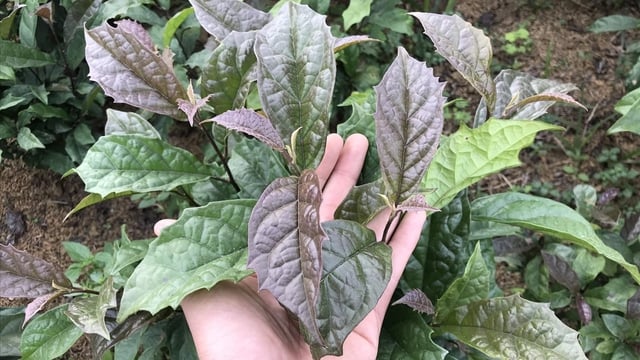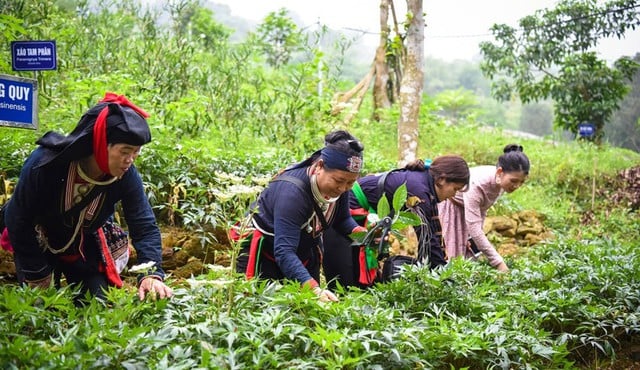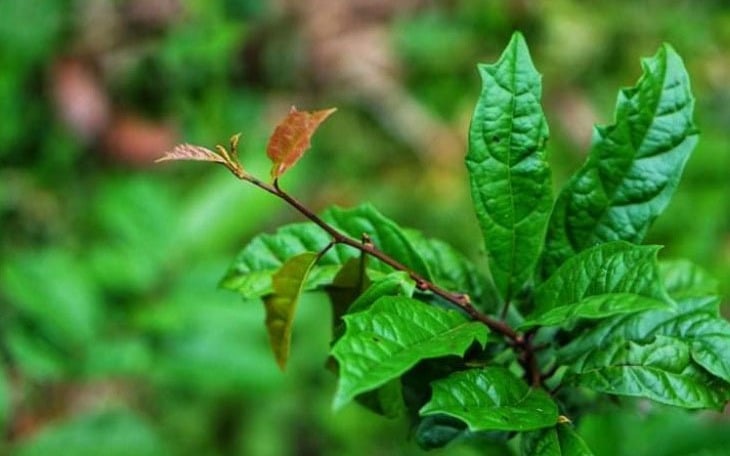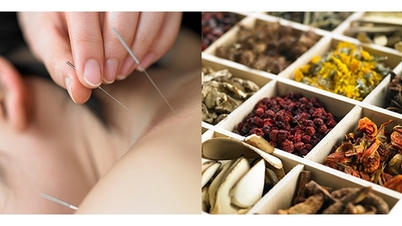For generations, the Muong community, especially in the "cradle" of traditional medicine, Phu Tho province (formerly Hoa Binh ), has lived in harmony and accumulated knowledge from the majestic mountains and forests. Over thousands of years, the Muong people have built an extremely large folk medicine system, a treasure trove of knowledge passed down through the "Me" (old women who are knowledgeable about traditional medicine) and traditional healers in the village.
In that priceless treasure, it would be a big mistake not to mention the black ginseng plant - the medicinal herb that has made the name of Muong medicine - and besides that are the traditional remedies for treating bone and joint diseases, which are considered the "nemesis" of rheumatism and pain. These remedies are not only folk experience but also a symbol of the deep connection between humans and nature, where the old forests bestow the most precious healing remedies.
Black tea tree and the detoxifying treasure of the Muong people
The scientific name of the black xạ plant is Celastrus hindsii, belonging to the Celastraceae family. According to the book Medicinal Plants and Animals in Vietnam, the Celastrus genus in Vietnam has 8 species, 4 of which are used as medicine, including very valuable medicinal herbs such as vine and black xạ. For the Muong people, this is not a strange plant. It grows wild in all the forests, but only the most experienced doctors know how to identify and use the correct "black xạ" species, distinguishing it from other types of yellow or white xạ. The name "xạ" in Muong means "liver", implying that this is the leading medicinal plant for liver diseases.

Black tea tree - a famous medicinal herb of the Muong people.
However, the name that makes xạ đen most famous is "cancer tree" (or ung thung tree). For a long time, the Muong people have secretly passed on to each other the experience of using this plant to make drinking water for people with tumors in the body. They believe that the water from the stem and leaves of xạ đen helps the body become healthier, helps inhibit the growth of tumors and prolongs life.
The popularity of the black tea plant has gone beyond the Muong village gate, attracting the attention of modern medicine. Many scientific research works, typically by Professor Le The Trung (Military Medical Academy), have delved into and discovered valuable active ingredients in the black tea plant. Studies have shown that compounds such as Flavonoid, Quinone and Saponin in the plant have strong antioxidant properties, inhibit the growth of cancer cells and slow down the metastasis process.
In addition to its cancer treatment support properties, xạ đen is also a valuable remedy for the liver. Muong people use it to support the treatment of diseases such as hepatitis, cirrhosis, high liver enzymes, fatty liver. In addition, it is also known for its sedative properties, helping to improve sleep, nervous breakdown, and stabilize blood pressure. Usually, Muong people will take the whole stem and leaves of xạ đen, dry them, then boil them to drink. The water tastes a bit astringent and slightly bitter, but it brings wonderful healing effects, just like the knowledge their ancestors have accumulated for thousands of years.
Bone and joint remedies : Muong people's wisdom in treating rheumatism
If the black tea plant is a shining star in supporting the treatment of tumors, then the remedies for bone and joint diseases represent the quintessence and complexity of the medical philosophy of the Muong people. They believe that bone and joint diseases (rheumatism, back pain, knee pain, spinal degeneration) are caused by poor blood circulation. Therefore, the treatment must be a comprehensive combination of many herbs, each with its own specific task.

The Muong people have built an extremely large folk medicine system, a treasure trove of knowledge passed down through the Mothers.
The black xạ plant itself is also present in some Muong people's bone and joint and spine remedies. According to folk experience, to treat pain, the roots and vines (stems) of the black xạ plant are considered more effective than the leaves, and are often combined with other medicinal herbs.
A complete Muong bone and joint medicine is often very complicated, with up to dozens of different herbs, painstakingly collected by traditional healers from deep in the forest.
Muong people’s treatment methods are also very diverse. The most common is decoction, the herbs are dried, made into a decoction and boiled to make water to drink every day. This is a way to treat the disease from the inside, helping to regulate the whole body.
These remedies are a living heritage, preserved by the traditional healers and the village elders. They are not only the ones who prescribe the medicine but also the ones who preserve a priceless indigenous medical knowledge, helping the Muong people fight against diseases with the very things that the green forest has to offer.
 How many types of black tea are there? Which type is best for treating diseases?
How many types of black tea are there? Which type is best for treating diseases?Source: https://suckhoedoisong.vn/y-hoc-co-truyen-muong-kho-bau-tu-cay-xa-den-va-nhung-bai-thuoc-xuong-khop-tru-danh-169251030144347723.htm



![[Photo] The road connecting Dong Nai with Ho Chi Minh City is still unfinished after 5 years of construction.](https://vphoto.vietnam.vn/thumb/1200x675/vietnam/resource/IMAGE/2025/11/04/1762241675985_ndo_br_dji-20251104104418-0635-d-resize-1295-jpg.webp)

![[Photo] Ho Chi Minh City Youth Take Action for a Cleaner Environment](https://vphoto.vietnam.vn/thumb/1200x675/vietnam/resource/IMAGE/2025/11/04/1762233574890_550816358-1108586934787014-6430522970717297480-n-1-jpg.webp)
![[Photo] Ca Mau "struggling" to cope with the highest tide of the year, forecast to exceed alert level 3](https://vphoto.vietnam.vn/thumb/1200x675/vietnam/resource/IMAGE/2025/11/04/1762235371445_ndo_br_trieu-cuong-2-6486-jpg.webp)
![[Photo] Panorama of the Patriotic Emulation Congress of Nhan Dan Newspaper for the period 2025-2030](https://vphoto.vietnam.vn/thumb/1200x675/vietnam/resource/IMAGE/2025/11/04/1762252775462_ndo_br_dhthiduayeuncbaond-6125-jpg.webp)






































































































Comment (0)